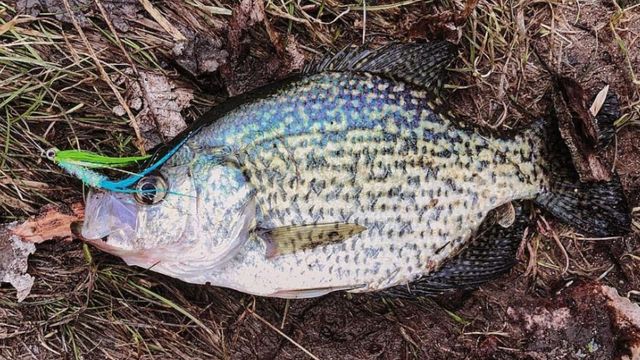
Late Winter Crappie Hacks: Slamming Sleepy Slab Crappie
Reservoirs are drawn down to their lowest levels, the water is near its coldest temperature and the crappie fishing gets tough during the late stages of winter.
However, the hours of daylight are getting longer and air temperatures are slowly climbing so the early signs of spring start snapping crappie out of their winter doldrums. Late winter is the prime time to catch the biggest crappie of the year when big prespawn staging females start to get hungry. Depending on where you live, February or early March is when late winter crappie start their migration towards the spawning banks.
Here are some patterns on how to catch late winter crappie on lowland and highland reservoirs.
Lowland Reservoirs
David Yang AKA DYangbass is a crappie fishing STUD.
These impoundments feature stained to murky water and lots of shallow structure so crappie will usually be shallower than their cousins living in highland lakes. These fish migrate from the main lake to the mouths of feeder creeks and main lake flats where you can catch them as shallow as 2 feet deep on warm, sunny days. A productive way to catch these migrating fish is to troll the flats with 2 1/2- to 3-inch soft plastic baits attached to 1/8-ounce jigs.
Spider rigging with jigs or minnows in the creeks is an effective way to catch the big staging females. The best areas of the lake to fish for late winter crappie are the upper arms of the tributaries and feeder creeks where the dirtier water warms up faster than the lower lake.
Highland Reservoirs
Stephanie Rackley AKA The Healthy Chew with a couple of SLABS.
Late winter crappie fishing can be tougher on the clear, deep highland lakes because the fish could be congregating around balls of shad at depths ranging from 40 to 75 feet. You can catch some of these deep fish vertical jigging a plastic tube attached to a 1/4- or 3/8-ounce horsehead jig.
On my home waters of Lake of the Ozarks, late winter warm spells of two to three days can trigger some good shallow action in stained water. My favorite late winter pattern is throwing a jig and bobber rig to schools of crappie congregated on secondary points. After I find the crappie with my electronics, I cast the jig set about 6 to 8 feet below the bobber to the spot where the fish are staging. I let the rig drift with the wind, which imparts enough action on the jig to trigger bites. If the weather is calm, I occasionally twitch the bobber to generate some action on my jig.
Updated September 28th, 2020 at 9:50 AM CT
